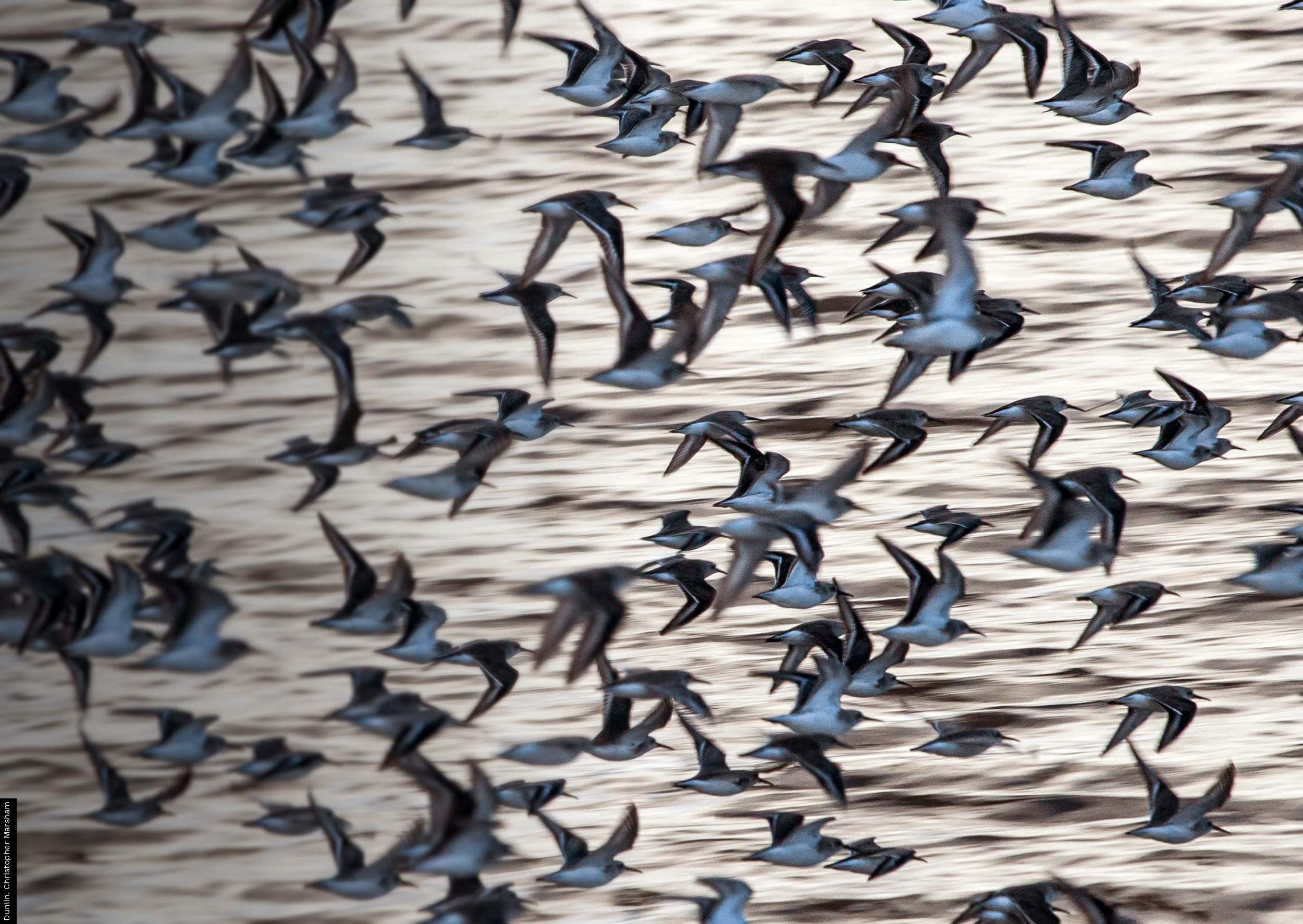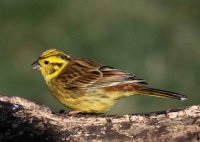Welsh Yellowhammers in long-term decline
07 Jul 2016 | No. 2016-29
Since 1994, Yellowhammer numbers have declined by 57% in Wales. The Yellowhammer is often thought of as a bird of arable farmland, with declines linked to agricultural intensification in this habitat specifically. However, the decline monitored by Breeding Bird Survey volunteers in Wales suggests the problem is a wider issue, as shown in the latest Breeding Bird Survey report.
The move towards more efficient grass-based livestock rearing and the resultant loss of potentially seed-rich arable and fodder crops, that provide a critical source of seeds during the winter months for Welsh Yellowhammers, is thought to be a driver behind the decline.
There is also additional pressure on breeding Yellowhammers in Wales because the high level of grazing in the country results in fewer unimproved, unfertilised and uncut field margins. Combined with increased herbicide spraying, this is reducing the availability of the invertebrate prey the Yellowhammers need to feed their young – thus reducing their overall breeding success. Added to this is the reduction in nest site availability due to the loss and degradation of farmland margins and hedgerows.
Sarah Harris, BBS Organiser at the British Trust for Ornithology, said “Yellowhammers are a familiar feature in the Welsh countryside and a decline of 57% shows these colourful buntings are in real trouble. Breeding Bird Survey coverage in Wales has increased in recent years, thanks to local efforts to encourage more volunteers to take part and to mentor those who take on a 1-km survey square for the first time. In time, this will increase the number of species for which we can calculate trends for Wales. Many thanks to all involved.”
Dr Siân Whitehead, Natural Resources Wales’ Terrestrial & Freshwater Ornithologist, said “This research will make sure that we’re making key decisions based on sound evidence, such as the importance of ensuring these wild bird populations have access to suitable habitat at all stages in their lifecycle. It’s not just a question of providing suitable sites for nests, but we are also making sure that birds can find enough food in both the breeding and non-breeding seasons.”
Stephen Bladwell RSPB Cymru’s Biodiversity Manager, said: “Like many of our farmland wildlife, these colourful little characters remain a key concern. Being a predominantly seed-eating bird about the size of a sparrow, shelter and food is vital for their continued survival. Thankfully, research has shown that there are ways of providing seed food throughout the colder months, as grass fields are left to set seed over the winter. Combined with the protection of hedgerows and diverse habitats such as ffridd this can make a real difference, helping to ensure the high pitched song of the Yellowhammer - often likened to ‘a little bit of bread and no cheese’ - is enjoyed for years to come.”
Notes for Editors
- Population trends for 54 bird species in Wales were calculated in this report, which brings together data from the main scheme for monitoring the population changes of the UK’s common breeding birds.
- In 2015, 338 BBS squares were surveyed in Wales. We are grateful to Natural Resources Wales for their support and funding with training and mentoring of BBS volunteers.
- The latest BBS report can be found at: www.bto.org/bbs- report
- The Breeding Bird Survey(BBS) is run by the British Trust for Ornithology (BTO) and is jointly funded by BTO, the Joint Nature Conservation Committee (JNCC) (on behalf of the Council for Nature Conservation and the Countryside, Natural England, Natural Resources Wales and Scottish Natural Heritage), and the Royal Society for the Protection of Birds (RSPB).
- The BTO/JNCC/RSPB Breeding Bird Survey (BBS) is a UK-wide project aimed at keeping track of changes in the breeding populations of widespread bird species. The BBS involves around 2,700 participants who survey more than 3,700 sites across the UK, enabling us to monitor the population changes of over 110 bird species. Knowing to what extent bird populations are increasing or decreasing is fundamental to bird conservation.
- This important survey is carried out by volunteer birdwatchers throughout the UK, who receive no financial reward or expenses for their efforts. We are indebted to them for their tremendous support.
- The BTO is the UK's leading bird research organisation. Over thirty thousand birdwatchers contribute to the BTO's surveys. They collect information that forms the basis of conservation action in the UK. The BTO maintains a staff of 100 at its offices in Thetford, Stirling, Bangor (Wales) and Bangor (Northern Ireland), who analyse and publicise the results of project work. The BTO's investigations are funded by government, industry and conservation organisations.
Contact Details
Sarah Harris
(Breeding Bird Survey Organiser, BTO)
Office: 01842 750050
(9am to 5.30pm)
Email: sarah.harris [at] bto.org
Paul Stancliffe
(BTO Media Manager)
Office: 01842 750050
(9am to 5.30pm)
Mobile: 07585 440910 (anytime)
Email: press [at] bto.org
Kelvin Jones
(BTO Wales)
Office: 01248 383285
Mobile: 07979713282
Email kelvin.jones [at] bto.org
Bethan Lloyd
(RSPB Communications Manager, Wales)
Office: 01248 676763
Email: bethan.lloyd [at] rspb.org.uk
Sian Whitehead
(Terrestrial & Freshwater Ornithologist, Natural Resources Wales)
Office: 01248 387246
Email: Sian.Whitehead [at] cyfoethnaturiolcymru.gov.uk
Images are available for use alongside this News Release. Please contact images [at] bto.org quoting reference 2016-July-29
The BTO has an ISDN line available for radio interviews. Please contact us to book an interview Office:01842 750050







Share this page